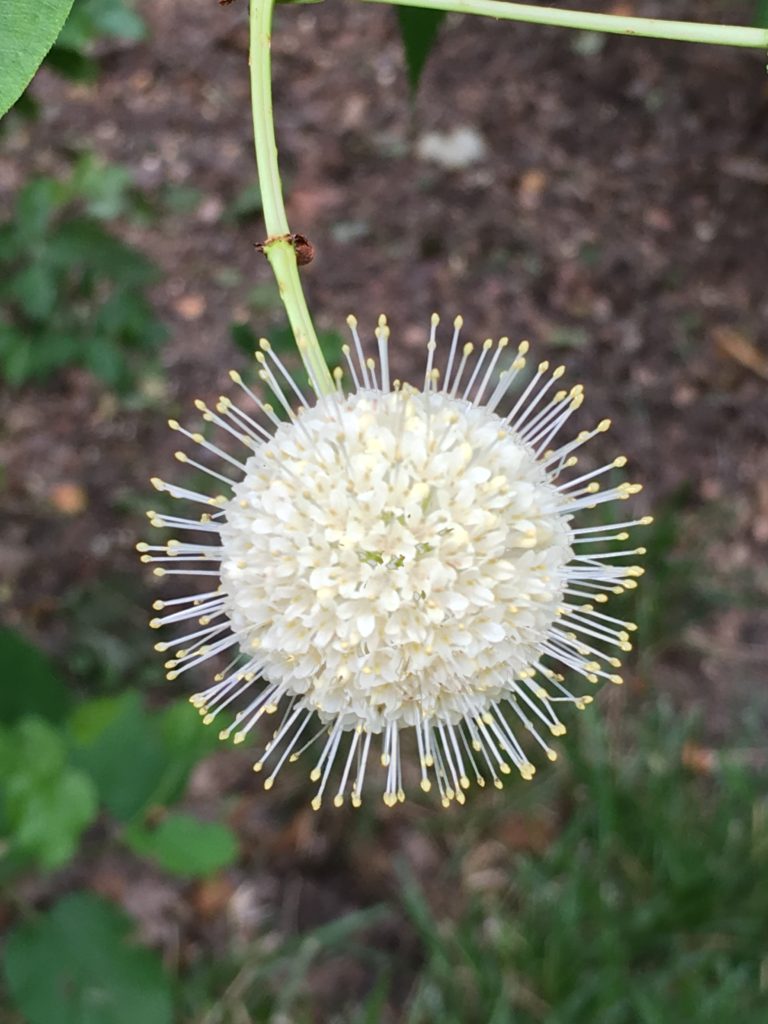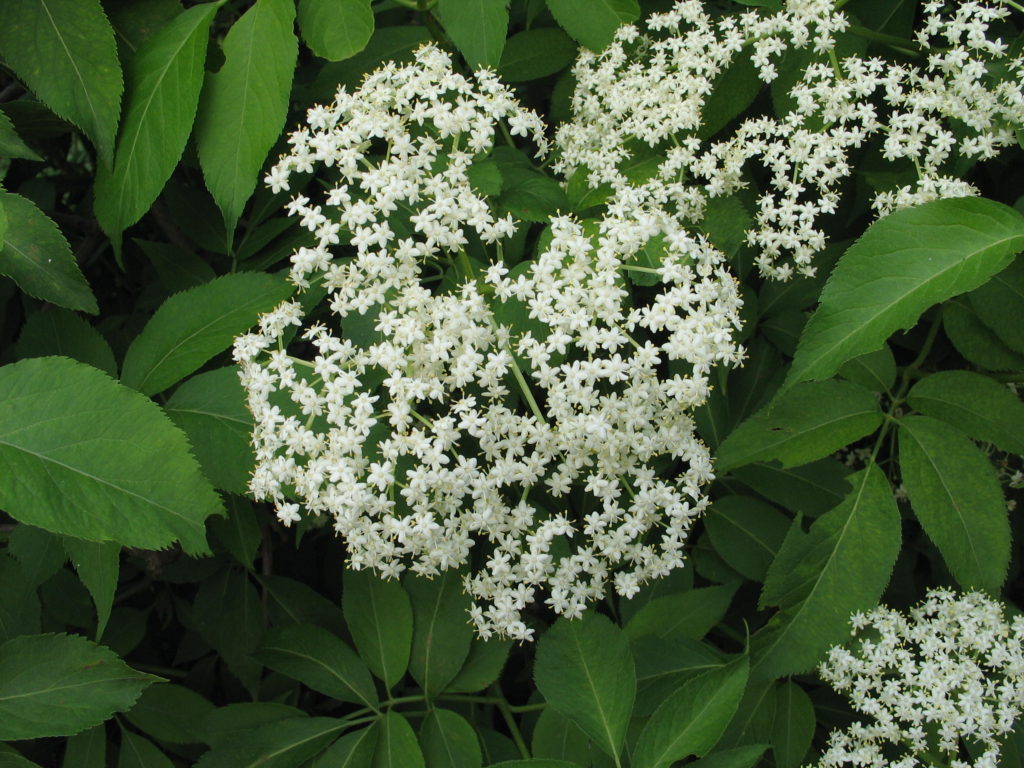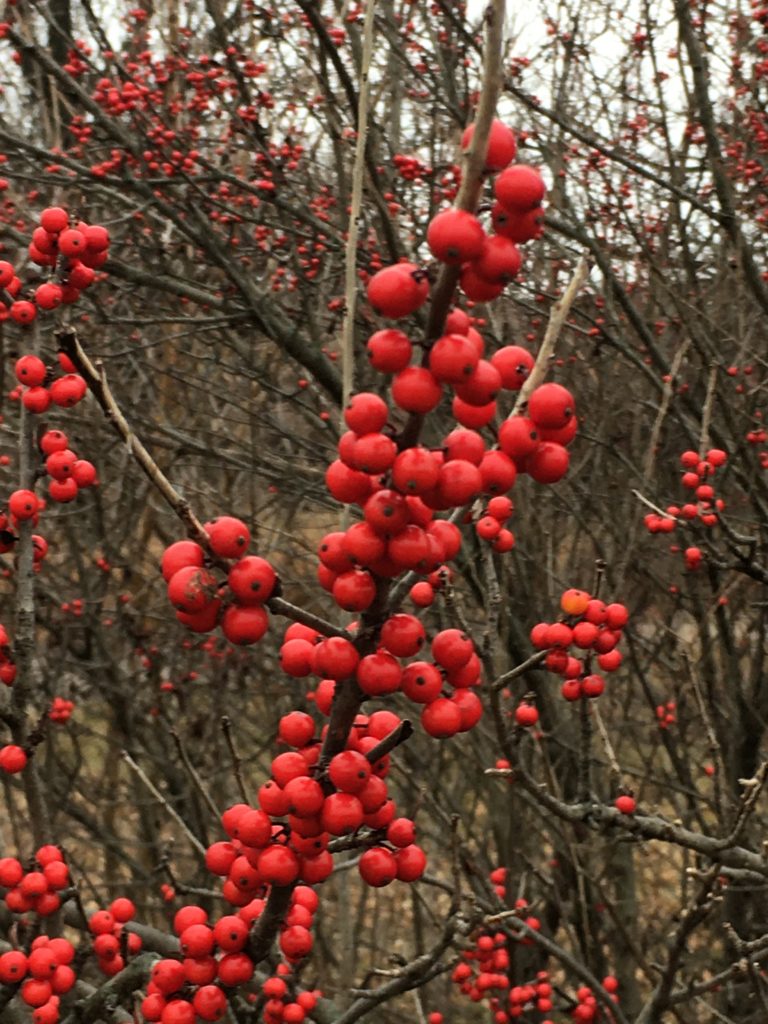Last week while splashing around in a lake in Missouri, I noticed a shoreline of shrubs blooming and covered with pollinators. And wouldn’t you know, someone had just recently asked me to recommend some shrubs for wet areas in their landscape. (Yes, there ARE wet places in Kansas.) The first example was right in front of me.
Buttonbush (Cephalanthus occidentalis)
That shrub I saw blooming along the lake was buttonbush. This deciduous shrub is commonly found in moist to wet areas in full sun to partial shade. It can persist even when submerged for a time. The lustrous leaves shine in the sunlight. In early to mid-summer, the unusual, fragrant flower balls of this native shrub are magnets to a host of pollinators.
I have seen up to two dozen swallowtail butterflies on one plant when in bloom. It has a rounded-upright habit ultimately reaching 8-10 feet tall and wide. ‘Sugar Shack®’ is a shorter form that works well in the landscape. Fruit persists into winter, adding winter interest.

Elderberry (Sambucus canadensis)
Elderberries are under appreciated as landscape plants. Even in the wild they often blend into their surroundings. They are only noticed when they burst into bloom in early summer with dense clusters of white flowers. Pollinators seek out these flowers and cover the flat-topped bundles.
Consider planting elderberry shrubs in a drainage area or part of the yard that always floods – they thrive in excess water. Many people use the raw elderberries in jams, wines, and home remedies. ‘Adams’ and ‘York’ are two types of elderberry we recommend for heavy fruit production. You must have at least one of each for best fruiting.

Dogwoods (Cornus sp.)
Some of the shrub dogwoods (Silky Cornus ammomum, Cornus racemosa and Cornus drummundii) are good options for wetter areas in the landscape. Each is a little different in height, shape and habit. However, they all offer creamy-white blooms in late spring or early summer. While in bloom, these shrubs are teaming with pollinators. Birds and other wildlife will eat the fruit that is produced. ‘Red Rover’ is a compact selection of silky dogwood with attractive blooms, bluish fruit and nice fall color.
Others
Black and Red Chokecherry, Aronia melanocarpa and Aronia arbutifolia
Possumhaw, Ilex decidua

Winterberry, Ilex verticillata cultivars and hybrids
Spicebush, Lindera benzoin
Arrowwood Viburnum, Viburnum dentatum
Blackhaw Viburnum, Viburnum prunifolium
Rusty Blackhaw, Viburnum rufidulum
As it turns out there are very few plants that will grow in soil that is constantly saturated. These shrubs are more tolerant of wet sites than others. Obviously, all plant roots require oxygen in order to function and grow properly. These shrubs persist in soil that lacks oxygen or is periodically flooded without succumbing to diseases and site related problems.
Try some of these native shrubs that are more adapted to these adverse conditions. You can find them at our FloraKansas Native Plant Festival in September!
